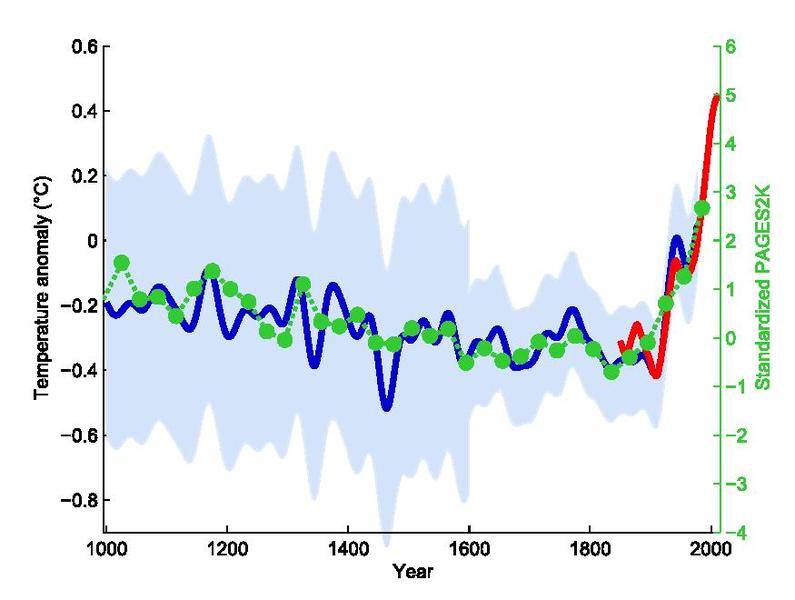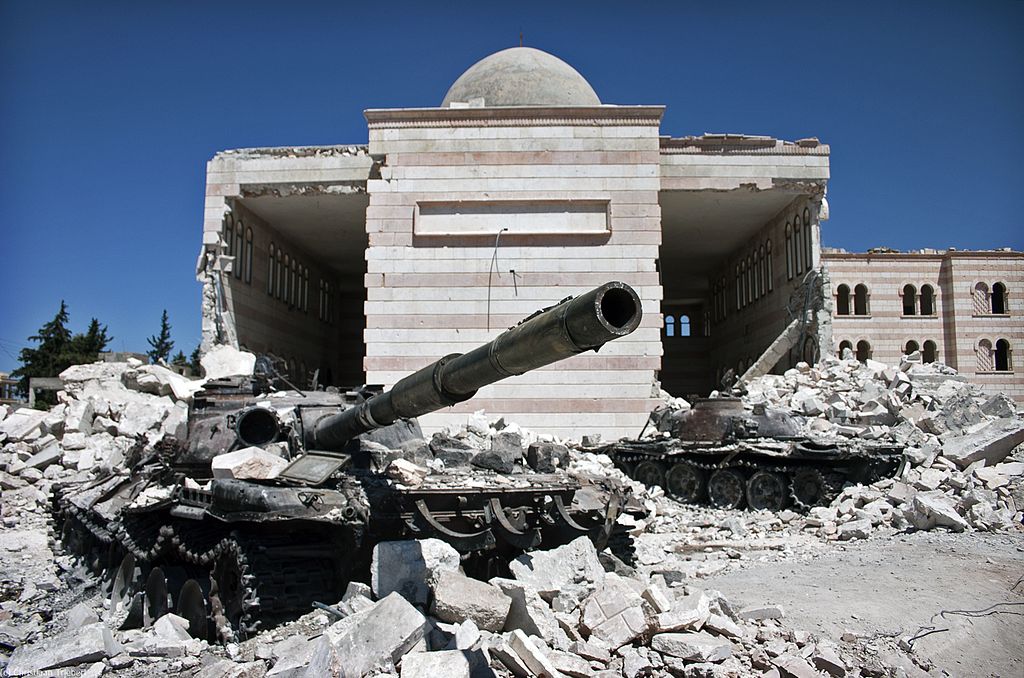There is perhaps no greater challenge facing humanity (and all species on the planet) than climate change. Yet, despite an almost unprecedented scientific consensus on the issue, there remains a vocal and politically connected minority who deny the existence of any meaningful change. Still, the data speaks for itself. Carbon dioxide in the atmosphere, just shy of 400 ppm (parts per million), is at by far the highest level for 650,000 years. Global temperature is up 1.4 degrees since 1880, and glaciers are visibly melting. In February 2015, the Arctic ice cover reached its lowest maximum extent since record keeping began. Ocean temperatures are also rising, as is ocean acidification, and sea levels are up seven inches in the last 100 years. And the list of climate change indicators goes on.
As we celebrate Earth Day, Origins offers ten essential points to know about climate change on Earth.
1. Snowballs and Hothouses: Climate Change over Geologic Time
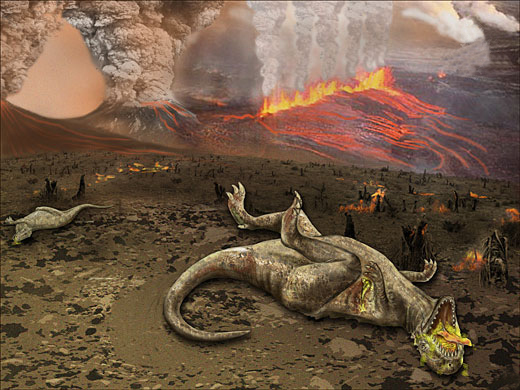 |
| The massive eruptions that formed the Deccan Traps about 66 million years ago altered global climate, possibly contributing to the extinction of many dinosaur species. |
Global climate has changed a lot over Earth’s history. At least twice during the Proterozoic (2.5 billion to 543 million years ago) global temperatures plunged, and ice may have covered the planet. At other times in the Earth history, climate was much warmer, with no ice caps or glaciers at all. Many natural forces contributed to these changes over geologic time, including variations in solar output, the configuration of continents, ocean currents, and volcanic eruptions. Life, too, has altered global climate by absorbing or emitting carbon in the atmosphere. What is different about current climate change is that it is anthropogenic (that is, man-made).
2. A Break in the Ice Ages
 |
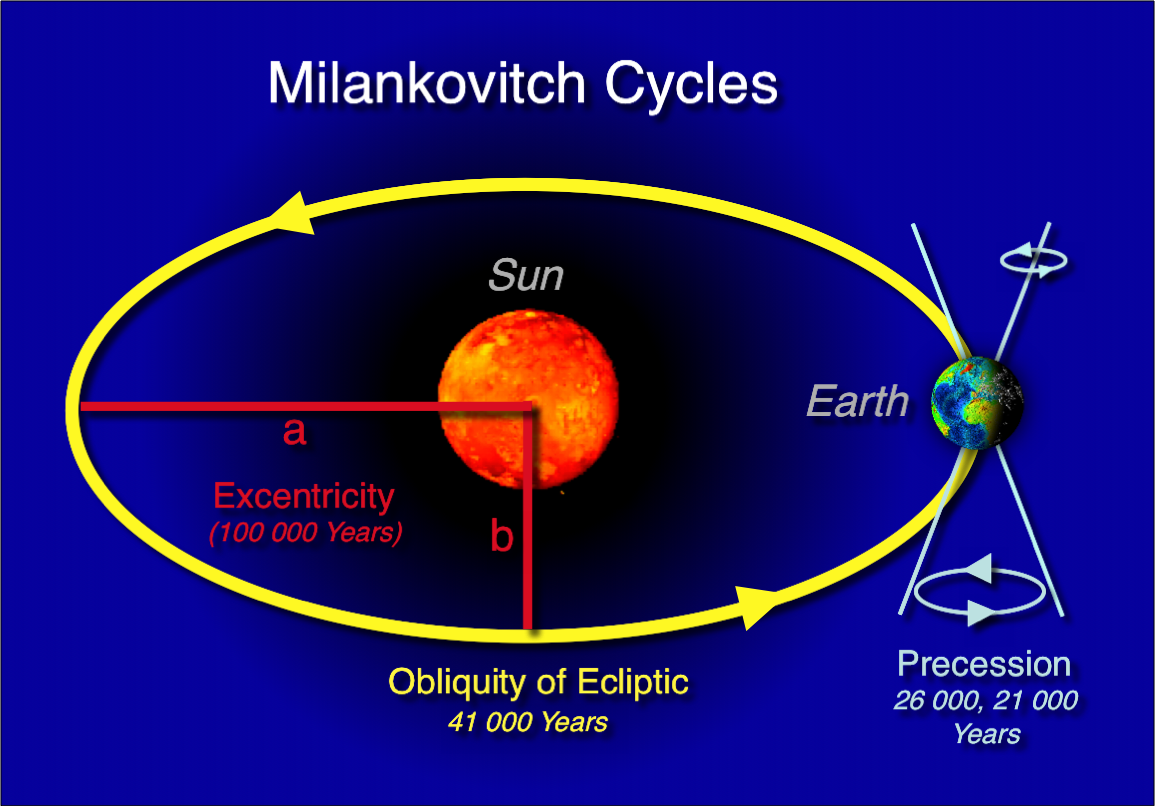 |
| The orbital cycles that brought the Earth in and out of ice ages since the Pleistocene are known as Milankovic Cycles, after their discoverer, the Serbian mathematician Milutin Milankovic (1879-1958). Based on these cycles, the Earth should be cooling now, not warming. | |
Humans evolved during the Pleistocene Epoch, a cold time in Earth history marked by long ice ages and shorter, warmer interglacial periods. The rise of agriculture and civilizations began around 11,000 years ago with the start of the most recent interglacial, which we call the Holocene. Long cycles in the Earth’s orbit have driven these glacial-interglacial cycles. These cycles do not, however, explain recent global warming.
3. The Cooling before Global Warming
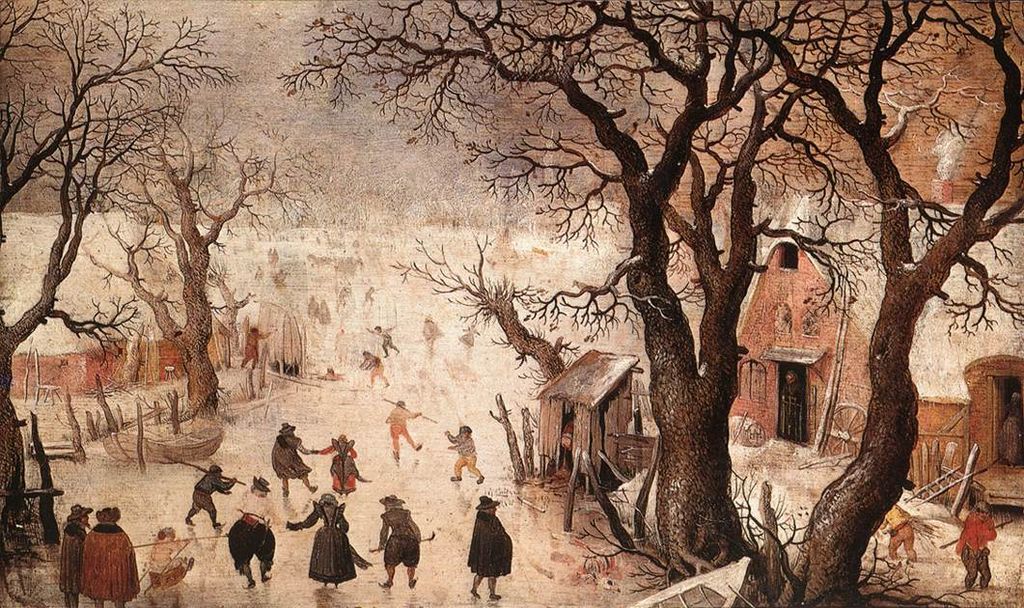 |
| Frozen winter landscapes, such as this scene by Hendrick Avercamp, were a typical feature of the coldest phase of the Little Ice Age from the late 1500s to the late 1600s. |
Global climate has varied during the Holocene. Temperatures were probably warmest more than 6,000 years ago, and then began to gradually fall. The coldest period in the last few thousand years was the “Little Ice Age” that started around 1400 CE. This natural cooling was much smaller than projections for warming in the 21st century. However, before modern technologies, people were more vulnerable to untimely cold and drought typical of the Little Ice Age, especially after big volcanic eruptions. Recent historical research implicates the Little Ice Age in famines, rebellions, and wars particularly in the late 1500s and 1600s.
4. Entering the Anthropocene
 |
| Coal-fired industries such as smelting, as illustrated in this 1801 painting, gradually emitted enough greenhouse gasses into the atmosphere to warm global climate and end the Little Ice Age. |
Starting with Britain’s Industrial Revolution around 1800, more countries began to burn coal and later oil and gas for heating and energy. By the late 1800s, emissions from burning fossil fuels—and from deforestation, agriculture, and livestock—began to change global climate, bringing the Little Ice Age to an end. Industrial technologies also sped up the global extraction of resources and movement of people, plants, and animals across the planet. The accelerating human impact on the environment has led some geologists to argue we have left the Holocene and entered the Anthropocene, or “Human Age.”
5. Predicting Global Warming
 |
| This diagram above is a simple illustration of the earth's greenhouse effect. |
By the mid-1800s, scientists began to discover how burning fossil fuels could change global climate. In 1859, John Tyndall proved experimentally that carbon dioxide and water vapor trapped heat by letting in shortwave radiation and reflecting back long-wave radiation (see picture). In 1896, Svante Arrhenius calculated that burning coal could substantially raise average global temperatures. In the late 1930s, British engineer Guy Stewart Callendar observed that temperatures were already rising and pointed to more greenhouse gasses as the cause.
6. Discovering Global Warming
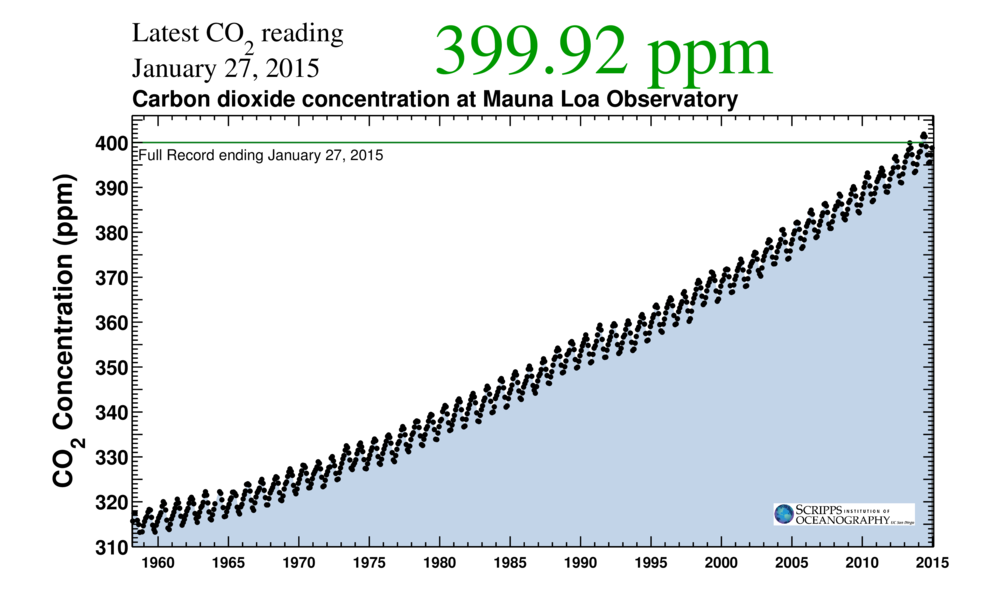 |
| The Mauna Loa observatory has measured atmospheric CO2 levels since 1960, producing the famous “Keeling Curve.” |
From the 1950s to 1990s, new discoveries gradually turned anthropogenic climate change from a tentative theory into a firm scientific consensus. Researchers including Roger Revelle and Charles Keeling demonstrated that carbon dioxide levels in the atmosphere were rising. Better reconstructions of past climate—including from cores drilled deep into glaciers and ice sheets—have made it clear that greenhouse gasses drove rapid changes in global climate. Faster computers and better climate models have improved forecasts and emphasized that current warming must be anthropogenic, not part of natural cycles as was the case in the past.
7. Denying Global Warming
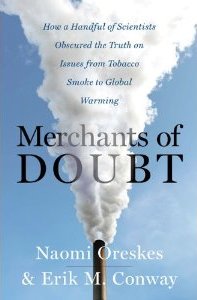 |
| Naomi Oreskes' and Erik M. Conway's Merchants of Doubt (2010) |
Even as evidence accumulated and climate scientists grew more alarmed, fossil fuel industries and allied lobbyists and think tanks worked to obscure and deny the science behind global warming. As investigated by Naomi Oreskes and Erik M. Conway in Merchants of Doubt (2010), these efforts drew on many of the same tactics—and sometimes the same experts—employed by the tobacco lobby to deny links between smoking and cancer. By the 2000s, virtually all climate scientists agreed that human greenhouse gas emissions were changing the climate, but many Americans remained confused or uncertain.
8. Confronting Global Warming
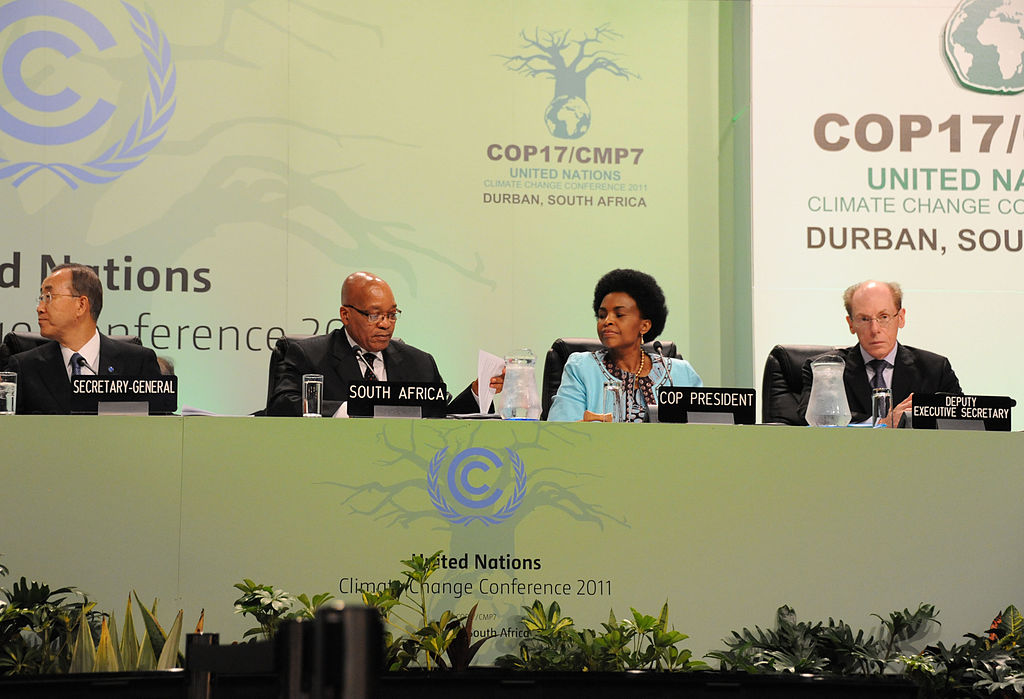 |
| From the 2011 UN Climate Change Conference in Durban, South Africa. |
Climate change gradually gained attention as a major international issue. Since 1988, an Intergovernmental Panel on Climate Change (IPCC) has brought together global experts to report consensus measurements, estimates, and impacts of climate change. The 1997 Kyoto Protocol set the first international greenhouse gas targets, but the United States didn’t join. Since then several United Nations summits have focused on climate change, but none has produced a binding global treaty. Rising public concern, falling costs for renewable energy, and recent commitments by the U.S. and China have raised hopes for more success at the next climate conference, Paris 2015.
9. The Acceleration of Global Warming
The Earth is already warming. The ten hottest years since instrumental measurements began have all occurred since 1998. The IPCC projects that without urgent reductions in greenhouse gas emissions, warming will exceed 2˚C (3.6˚F) by 2100, unleashing potentially catastrophic heat waves, droughts, and sea level rise. In the last decade the U.S. and Europe have reduced emissions, but increases in China and India have been faster and more than offset reductions elsewhere on the planet.
10. The Complex Consequences of Climate Change
What climate change means for different people depends on location and circumstances. Regions threatened by rising sea levels, bigger storms, floods, and droughts could be more at risk. Poorer nations, for lack of resources, are more likely to struggle to adapt and build resilient economies and infrastructures. Historical examples suggest climate change will aggravate political instability, poverty, and conflict. Already some analysts have pointed to global warming and severe droughts in Syria and around the world as a contributing factor inthe 2011 Arab Spring and Syrian civil war. The same has been said of the fighting in Sudan and Darfur. And with sea levels rising, countries like the Maldives (in the Indian Ocean) and Kiribati (in the Pacific) may simply disappear under water, leaving their populations refugees.

